- Why Use Hydrogen Peroxide for Seedlings?
- Benefits of Hydrogen Peroxide
- When to Use Hydrogen Peroxide for Seedlings?
- Optimal Timing
- 1. Seed Soaking
- 2. Seedling watering
- 3. Foliar spray
- 4. Transplanting
- How to Prepare Hydrogen Peroxide Solution?
- Steps to Prepare the Solution
- How to Apply Hydrogen Peroxide to Seedlings?
- Methods of Application
- How Often to Apply Hydrogen Peroxide?
- General Guidelines for Hydrogen Peroxide Application:
- Frequency of Hydrogen Peroxide Application:
- Frequency of Application
- Questions and Answers:
- What is hydrogen peroxide and why is it beneficial for seedlings?
- How should hydrogen peroxide be used for seedlings?
- Can hydrogen peroxide be used for all types of seedlings?
- What are some signs that seedlings may benefit from hydrogen peroxide treatment?
- Are there any alternative methods or products that can be used instead of hydrogen peroxide for seedlings?
- Is hydrogen peroxide safe for humans and the environment?
- Videos: Germinate OLD SEEDS Using Hydrogen Peroxide UPDATE + Answering Your Questions!

When it comes to growing seedlings, it’s important to give them the best start possible. One simple and effective way to strengthen and protect seedlings is by using hydrogen peroxide. Hydrogen peroxide is a powerful tool that can help prevent disease, promote healthy root growth, and increase overall plant vigor. In this article, we will explore the various ways in which you can use hydrogen peroxide for your seedlings.
1. Seed Soaking: Before planting your seeds, you can soak them in a mixture of water and hydrogen peroxide. This helps to kill any pathogens or fungi that may be present on the seeds, preventing them from causing disease once the seedling emerges. Soaking the seeds for about 30 minutes in a solution of one part hydrogen peroxide to nine parts water is usually sufficient.
2. Seedling Watering: Once your seedlings have emerged, you can use hydrogen peroxide to water them. This helps to oxygenate the soil, promoting healthy root growth and preventing root rot. Simply mix one tablespoon of hydrogen peroxide with one gallon of water, and use this mixture to water your seedlings.
3. Disease Prevention: Hydrogen peroxide can also be used as a foliar spray to prevent diseases such as damping off, powdery mildew, and fungal infections. Dilute one tablespoon of hydrogen peroxide with one gallon of water, and spray this mixture onto your seedlings every couple of weeks. This will help to kill any pathogens present on the leaves and prevent diseases from taking hold.
4. Seedling Transplant: When transplanting your seedlings into larger pots or into the garden, you can use hydrogen peroxide to help reduce transplant shock. Simply mix one tablespoon of hydrogen peroxide with one gallon of water, and water your seedlings with this mixture after transplanting. This will help to prevent any pathogens from infecting the newly transplanted seedlings and aid in their overall recovery.
Remember, hydrogen peroxide is a powerful tool, but it should be used in moderation. Be sure to follow the recommended dilution rates and application frequencies to avoid harming your seedlings. With these easy and effective tips, you can use hydrogen peroxide to strengthen and protect your seedlings, giving them the best chance at thriving and growing into healthy plants.
Why Use Hydrogen Peroxide for Seedlings?
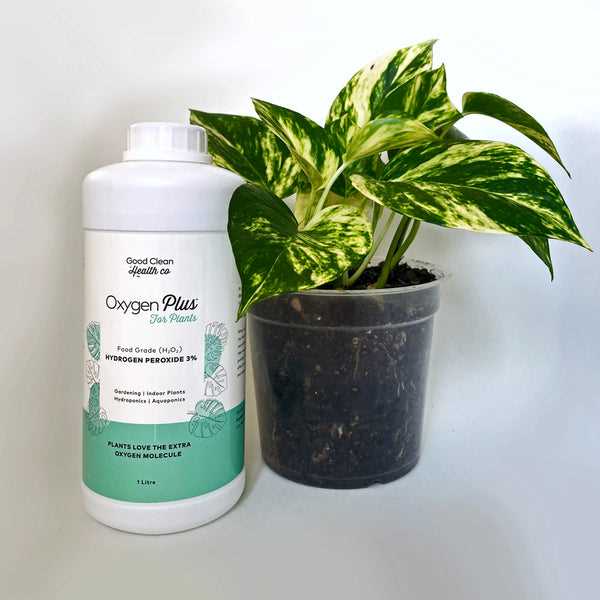

Using hydrogen peroxide for seedlings can be beneficial in multiple ways. Here are some reasons to consider incorporating hydrogen peroxide into your seedling care routine:
- Preventing and treating root rot: Hydrogen peroxide can help prevent and treat root rot in seedlings. Root rot is a common issue that can occur due to overwatering or poor drainage. Hydrogen peroxide acts as an oxygen source, promoting a healthy aerobic root environment and suppressing the growth of anaerobic organisms that cause root rot.
- Increased germination success: Hydrogen peroxide can be used to increase the success of germination. When used as a seed soak, it can help to disinfect the seeds, reducing the risk of fungal and bacterial infections. This can lead to higher germination rates and healthier seedlings.
- Improving nutrient uptake: Hydrogen peroxide can enhance the absorption and availability of nutrients for seedlings. It can break down organic matter in the soil, releasing additional nutrients that may not be readily available to the seedlings. This can promote healthier growth and development.
- Boosting seedling immune system: Hydrogen peroxide has antimicrobial properties that can help boost the immune system of seedlings. It can protect seedlings from harmful pathogens and reduce the risk of diseases.
- Controlling fungal issues: Hydrogen peroxide can be effective in controlling fungal issues often encountered by seedlings, such as damping off. Damping off is a disease caused by various fungi that attack the seedlings’ stems and roots. Hydrogen peroxide can help prevent and treat damping off, promoting stronger and healthier seedlings.
Overall, using hydrogen peroxide for seedlings can play a vital role in strengthening and protecting your plants, leading to more successful and thriving growth.
Benefits of Hydrogen Peroxide
Hydrogen peroxide (H2O2) is a versatile and multipurpose chemical compound that offers several benefits when used in gardening, particularly for seedlings. Here are some of the benefits of using hydrogen peroxide for seedlings:
- Promotes oxygen availability: Hydrogen peroxide breaks down into water and oxygen, releasing oxygen molecules into the soil. This increase in oxygen availability can benefit seedlings by promoting root development and improving overall plant health.
- Prevents root rot: Seedlings are susceptible to root rot, especially in overwatered or poorly drained soil. Hydrogen peroxide can help prevent root rot by eliminating harmful bacteria and fungi that can cause infections. Its antimicrobial properties can help maintain a healthy root system, leading to stronger and more resilient seedlings.
- Enhances nutrient absorption: Hydrogen peroxide can help increase the availability and uptake of nutrients by seedlings. It acts as an oxygen carrier, facilitating nutrient absorption in the root zone. This can result in improved nutrient utilization and overall plant growth.
- Provides protection against pests: Hydrogen peroxide has insecticidal properties, making it effective against certain pests that can damage seedlings. By using hydrogen peroxide in your gardening routine, you can reduce the risk of pest infestations and potential damage to your seedlings.
- Aids in seed germination: Hydrogen peroxide can be used to soak seeds before planting, as it has been found to enhance germination rates. It helps to break down seed dormancy and promotes quicker and more uniform germination.
It is important to remember that hydrogen peroxide should be used in moderate concentrations and with caution to avoid any negative effects on plants. Always dilute it properly and follow the recommended application instructions.
When to Use Hydrogen Peroxide for Seedlings?
Hydrogen peroxide is a versatile solution that can be used at different stages of seedling growth. Here are some situations when you can use hydrogen peroxide for your seedlings:
- Seed Germination: You can use hydrogen peroxide to help sterilize your seeds before planting. Soaking the seeds in a diluted hydrogen peroxide solution can help kill any pathogens or bacteria that may be present on the seed surface, increasing the chances of successful germination.
- Transplanting: When transplanting seedlings into larger pots or the garden, you can use hydrogen peroxide to water the plants. This helps prevent transplant shock and stimulates root growth. It can also help sterilize the soil and prevent the growth of harmful organisms.
- Preventing Damping-Off Disease: Damping-off disease is a common problem in seedlings, where they suddenly collapse and die due to fungal or bacterial infection. Hydrogen peroxide can be used as a preventive measure by spraying a diluted solution on the seedlings. This can help kill any pathogens that may be present on the surface of the growing medium and protect the seedlings from disease.
Remember to always dilute the hydrogen peroxide before using it on your seedlings, as using it directly in its concentrated form can harm the plants. As a general rule, a 3% hydrogen peroxide solution is safe for most seedlings, but it’s always best to check the specific requirements for your plant species.
Optimal Timing
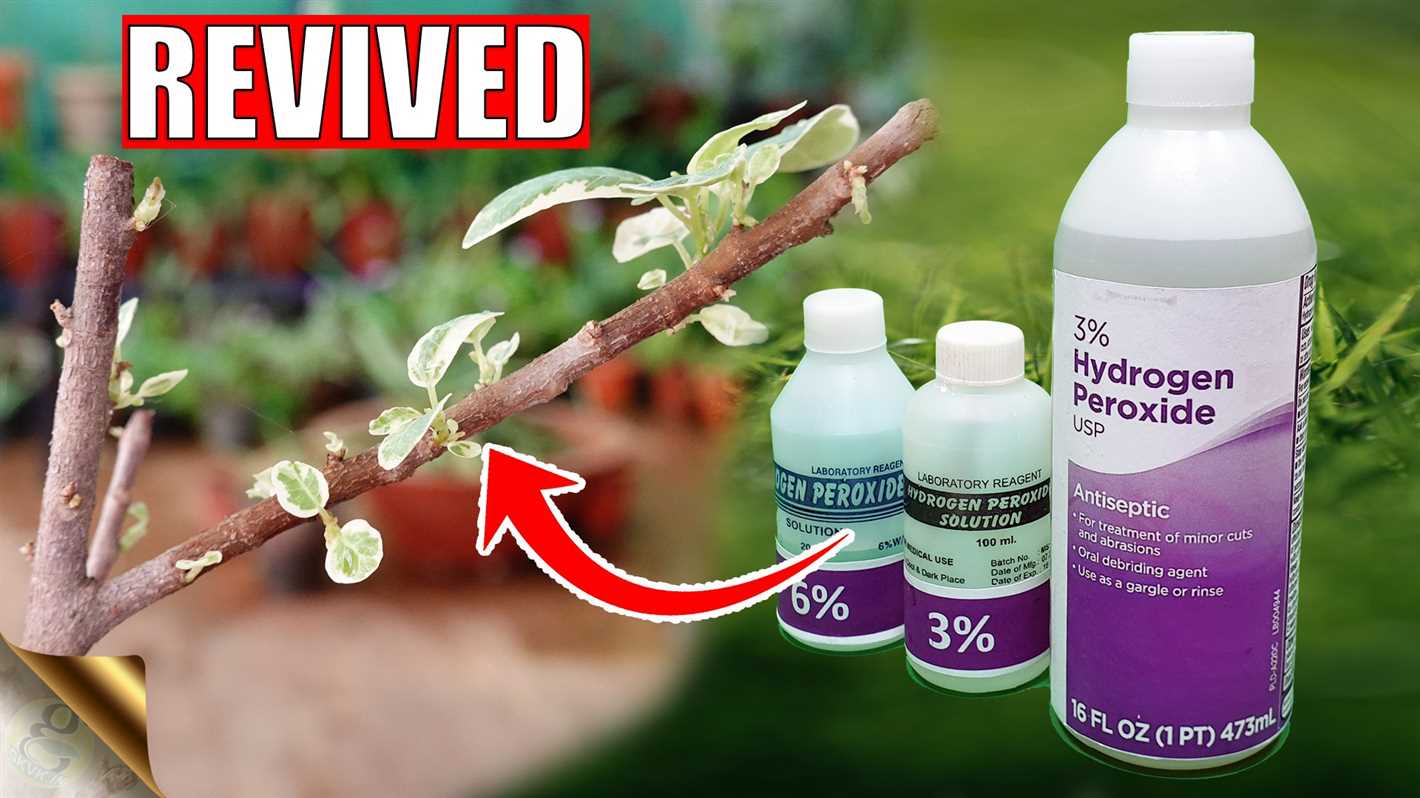

Using hydrogen peroxide for seedlings can be done at various stages of their growth. However, it is important to choose the optimal timing to ensure maximum benefits. Here are some guidelines:
1. Seed Soaking
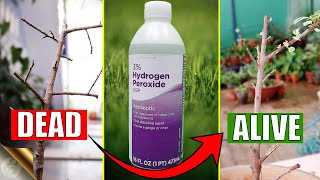

If you want to give your seeds an extra boost before planting, you can soak them in a hydrogen peroxide solution. This helps to remove any pathogens on the seeds and promotes faster germination. Soak the seeds in a 3% hydrogen peroxide solution for about 30 minutes before planting.
2. Seedling watering
Once your seedlings have sprouted and started to grow, you can use hydrogen peroxide to strengthen their roots and protect them from diseases. Mix 1 tablespoon of 3% hydrogen peroxide with 1 cup of water. Water your seedlings with this mixture once a week, making sure to saturate the soil around the roots.
3. Foliar spray
In addition to watering, you can also use hydrogen peroxide as a foliar spray to protect your seedlings from fungal diseases. Mix 1 part 3% hydrogen peroxide with 5 parts water in a spray bottle. Lightly mist the leaves of your seedlings every 2 weeks to prevent the growth of pathogens.
4. Transplanting
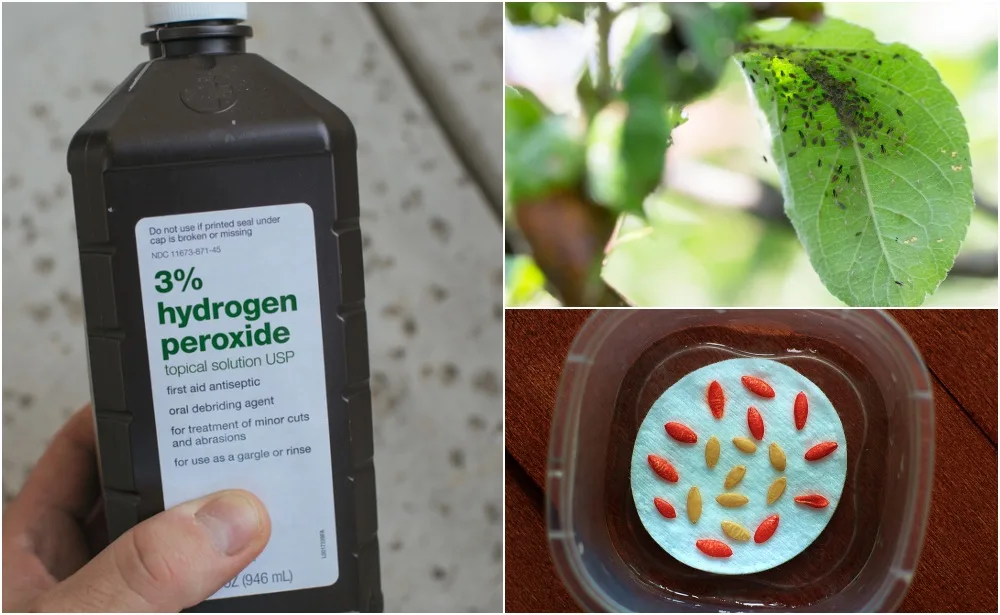

If you are transplanting your seedlings into larger containers or the garden, you can use hydrogen peroxide to reduce the risk of transplant shock. Mix 1 tablespoon of 3% hydrogen peroxide with 1 gallon of water. Water your transplanted seedlings with this mixture immediately after transplanting to promote root growth and prevent infections.
By following these guidelines, you can effectively use hydrogen peroxide to strengthen and protect your seedlings at different stages of their growth, ultimately improving their overall health and vitality.
How to Prepare Hydrogen Peroxide Solution?
Preparing a hydrogen peroxide solution for seedlings is a simple process. Here are the steps to follow:
- Gather the ingredients: You will need hydrogen peroxide, water, and a measuring cup.
- Determine the concentration: The recommended concentration for seedlings is a 3% hydrogen peroxide solution. Most commercially available hydrogen peroxide solutions are already 3%.
- Measure the hydrogen peroxide: Use the measuring cup to pour the desired amount of hydrogen peroxide into a clean container. Start with a small amount and adjust accordingly based on the size of your seedlings.
- Add water: Fill the rest of the container with water to dilute the hydrogen peroxide. The ratio should be 1 part hydrogen peroxide to 4 parts water.
- Mix well: Stir the solution thoroughly to ensure the hydrogen peroxide is evenly distributed in the water.
- Transfer to a spray bottle: If you plan to use the solution as a foliar spray, transfer it to a spray bottle for easy application. Alternatively, you can use a watering can for drenching the soil.
Remember to label the container or spray bottle with the concentration and date of preparation for future reference.
Steps to Prepare the Solution
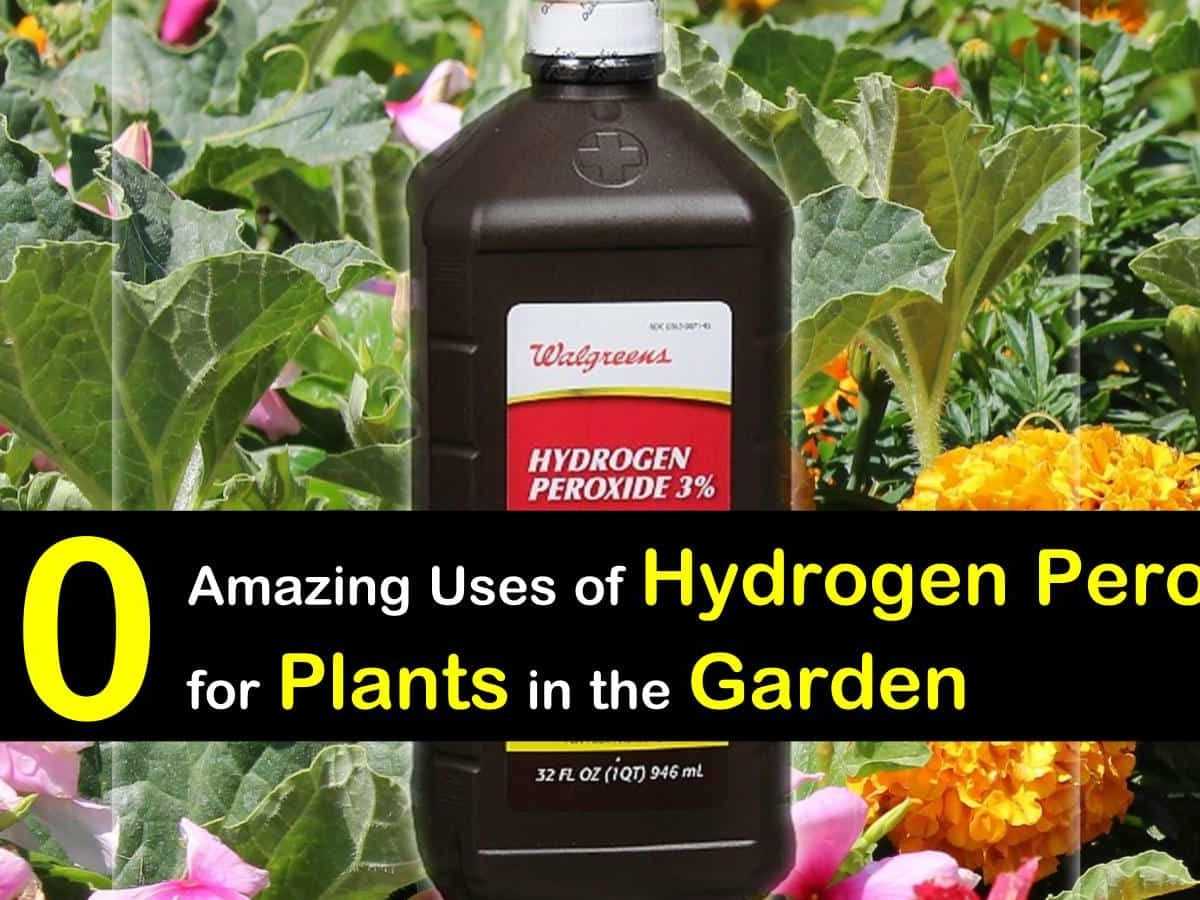

Preparing a hydrogen peroxide solution for seedlings is a simple process. Follow these steps to create an effective solution:
- Start by gathering the necessary materials: hydrogen peroxide, water, a measuring cup, and a spray bottle.
- Fill the measuring cup with the desired amount of water. The ratio typically recommended is one part hydrogen peroxide to ten parts water.
- Add the hydrogen peroxide to the water, maintaining the suggested ratio. For example, if you are using 1 cup of water, add 1/10 cup of hydrogen peroxide.
- Stir the mixture gently to ensure the hydrogen peroxide is well-distributed in the water.
- Transfer the solution to a spray bottle for easy application.
It is important to note that hydrogen peroxide solutions gradually lose their potency over time. Therefore, it is best to prepare a fresh solution each time you plan to use it on your seedlings.
Following these simple steps will enable you to prepare a hydrogen peroxide solution that can be safely applied to your seedlings to strengthen and protect them. Remember to always handle hydrogen peroxide with care and follow the recommended dilution ratios to prevent any damage to your plants.
How to Apply Hydrogen Peroxide to Seedlings?
Applying hydrogen peroxide to seedlings can be an effective way to strengthen and protect them from common plant diseases and pests. Here is a step-by-step guide on how to apply hydrogen peroxide to seedlings:
- Mix the solution: Start by preparing a solution of hydrogen peroxide. You can use a 3% hydrogen peroxide solution, which is commonly available in most drugstores. Dilute the hydrogen peroxide by mixing one part of the solution with two parts of water.
- Select a spray bottle: Transfer the diluted hydrogen peroxide solution into a spray bottle. Make sure to use a clean spray bottle that has not been used for any other chemicals or substances.
- Mist the seedlings: Gently mist the seedlings with the diluted hydrogen peroxide solution. Start from the top and work your way down, making sure to cover the entire surface of the seedlings. Avoid saturating the soil.
- Repeat the application: Depending on the condition of the seedlings and the severity of any existing problems, you may need to repeat the application of hydrogen peroxide every 1-2 weeks. However, be cautious not to overuse hydrogen peroxide, as excessive amounts can harm the seedlings.
- Observe and monitor: After applying hydrogen peroxide to the seedlings, observe their growth and health. Look for any signs of improvement or any new issues that may arise. Adjust the frequency of application based on the specific needs of your seedlings.
In addition to its disease-fighting properties, hydrogen peroxide may also help in oxygenating the soil and promoting healthy root development. However, it’s essential to use hydrogen peroxide as a complement to proper care and cultivation practices, such as providing adequate sunlight, water, and nutrients.
Remember to consult a gardening expert or conduct your own research to ensure the accurate application of hydrogen peroxide to seedlings, as different plant varieties and environments may have specific requirements and sensitivities.
Methods of Application
- Seed Soaking: To strengthen and protect your seedlings from diseases, you can soak the seeds in a hydrogen peroxide solution before planting. Prepare a mixture of 1 part hydrogen peroxide and 10 parts water. Place the seeds in the solution for about 30 minutes, then rinse them thoroughly with clean water before planting.
- Seed Tray Treatment: Another method is to treat the seed trays before sowing the seeds. Mix 1 part hydrogen peroxide with 3 parts water and spray this solution onto the seed trays. Allow the trays to dry before adding the soil and planting the seeds. This treatment helps to disinfect the trays and prevent the growth of harmful fungi.
- Foliar Spray: Once the seedlings have emerged, you can use a hydrogen peroxide foliar spray to promote their growth and protect them from diseases. Prepare a solution of 1 tablespoon of hydrogen peroxide and 1 cup of water. Transfer the solution to a spray bottle and apply it to the seedlings, making sure to coat both the leaves and the soil surface. Repeat this application once a week.
- Root Drench: To strengthen the root system of your seedlings, you can use a hydrogen peroxide root drench. Mix 1 part hydrogen peroxide with 4 parts water and pour this solution directly onto the soil around the seedlings’ roots. The hydrogen peroxide will help to oxygenate the soil and promote healthy root development.
Remember to always follow the recommended dilution ratios and avoid using undiluted hydrogen peroxide, as it can be harmful to seedlings. Additionally, it is important to test the hydrogen peroxide solution on a small group of seedlings before applying it to the entire crop to ensure compatibility and minimize any potential damage.
How Often to Apply Hydrogen Peroxide?
When using hydrogen peroxide for seedlings, it is important to apply it at the right frequency to ensure its effectiveness and avoid any potential harm to the plants. The frequency of hydrogen peroxide application will depend on the specific needs of your seedlings and the condition of your growing environment.
General Guidelines for Hydrogen Peroxide Application:


- Start by diluting the hydrogen peroxide solution to a concentration of 3% with water. This is the most common concentration used for seedlings.
- Use a spray bottle to evenly mist the seedlings and the surrounding soil with the diluted hydrogen peroxide solution.
- Avoid spraying the hydrogen peroxide solution directly onto the leaves or developing flowers, as this may cause damage.
- Apply the hydrogen peroxide solution in the morning or evening when the temperature is cooler to minimize the risk of leaf burn.
Frequency of Hydrogen Peroxide Application:
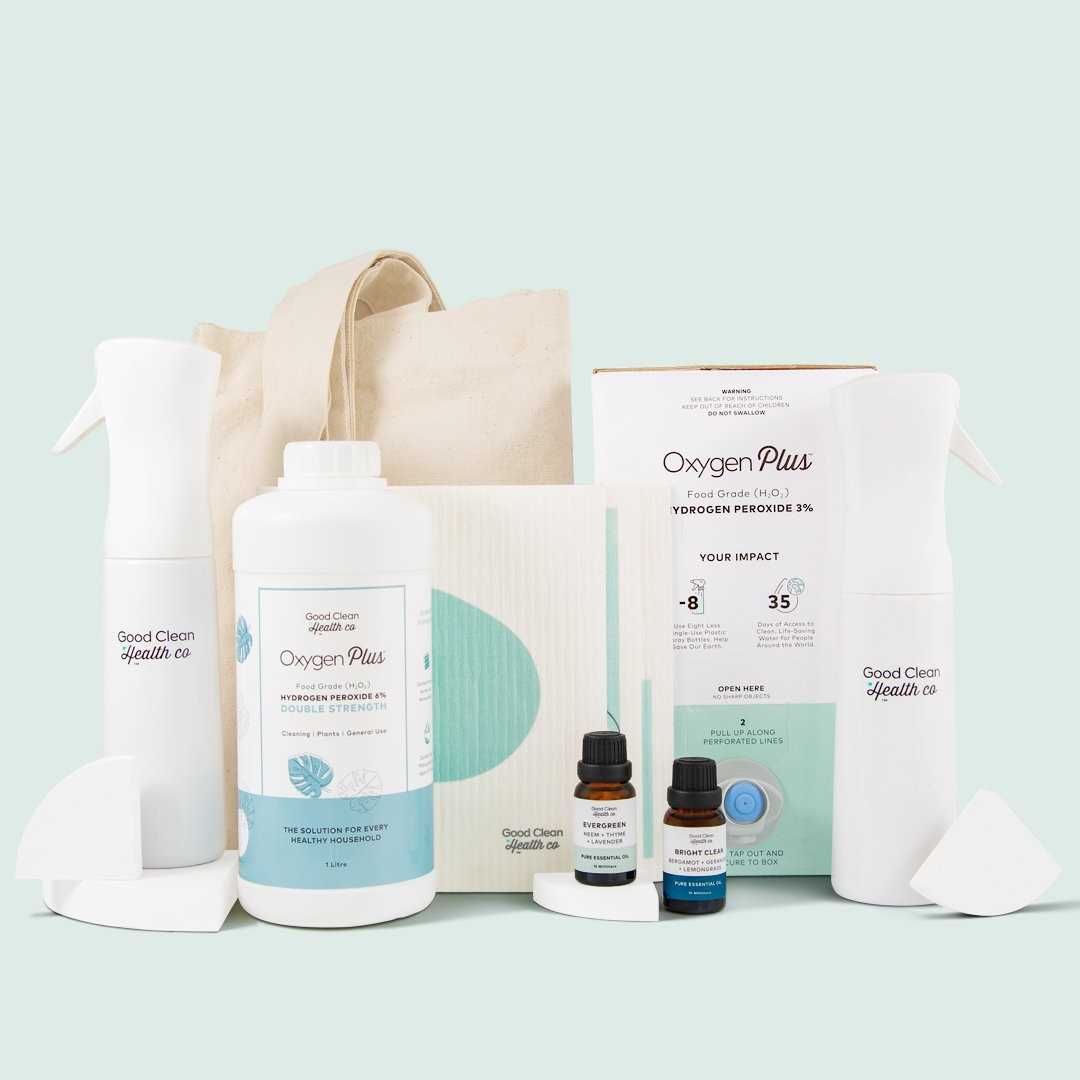

The frequency of hydrogen peroxide application will depend on various factors, such as the following:
- Planting Conditions: If your seedlings are growing in a clean and disease-free environment, you may only need to apply the hydrogen peroxide solution once a week.
- Pest or Disease Problems: If you notice signs of pests or diseases, such as fungal growth or insect infestations, you may need to increase the frequency of hydrogen peroxide application. In such cases, it is recommended to apply the solution every other day until the problem is resolved.
- Seedling Health: If your seedlings are weak or appear stressed, you may consider applying the hydrogen peroxide solution more frequently. However, be cautious not to overapply, as this may have adverse effects.
It is important to monitor the response of your seedlings to the hydrogen peroxide treatment. If you notice any negative effects or signs of damage, such as wilting or leaf discoloration, reduce the frequency of application or discontinue its use altogether.
| Frequency of Application | Suggested Conditions |
|---|---|
| Once a week | Clean and disease-free environment |
| Every other day | Pest or disease problems |
| More frequent | Weaker or stressed seedlings |
Remember to always read and follow the instructions on the hydrogen peroxide product label. Additionally, consult with a plant expert or seek professional advice if you have any concerns or questions about the use of hydrogen peroxide for seedlings.
Frequency of Application
When using hydrogen peroxide for seedlings, it is important to remember that moderation is key. While hydrogen peroxide can be beneficial for strengthening and protecting seedlings, using it too frequently or in high concentrations can have negative consequences. Here are some guidelines for the frequency of application:
- Newly Planted Seeds: If you are using hydrogen peroxide for new seeds that have just been planted, it is recommended to lightly mist the soil with a diluted solution of hydrogen peroxide (1 part hydrogen peroxide to 3 parts water) once a day until the seeds germinate.
- Established Seedlings: Once the seedlings have sprouted, you can decrease the frequency of application to once every 2-3 days. Be sure to continue using the diluted solution to avoid any potential damage to the seedlings.
- Preventative Measures: If you are using hydrogen peroxide as a preventative measure to protect seedlings from diseases and pests, it is recommended to apply it once every 7-10 days. This can help to keep the seedlings healthy and decrease the risk of any potential issues.
Remember to always monitor your seedlings closely for any signs of damage or stress. If you notice any adverse effects, such as yellowing or wilting of the leaves, reduce the frequency of hydrogen peroxide application or discontinue use.
Questions and Answers:
What is hydrogen peroxide and why is it beneficial for seedlings?
Hydrogen peroxide is a chemical compound that consists of oxygen and hydrogen. It is beneficial for seedlings as it helps in strengthening and protecting them. It acts as a disinfectant, killing any harmful bacteria or fungi that may be present in the soil or on the seedlings. It also stimulates root growth and provides additional oxygen to the roots, which can improve their overall health and development.
How should hydrogen peroxide be used for seedlings?
Hydrogen peroxide can be used for seedlings by diluting it with water. A commonly recommended ratio is 1 part hydrogen peroxide to 4 parts water. This diluted solution can then be applied to the soil or sprayed onto the seedlings. It is important to not overuse hydrogen peroxide, as it can be harmful to the plants. It is best to use it sparingly and monitor the seedlings for any negative effects.
Can hydrogen peroxide be used for all types of seedlings?
Hydrogen peroxide can be used for most types of seedlings. However, it is always best to check the specific needs of the plants you are growing, as some may be more sensitive to hydrogen peroxide than others. It is also important to use the correct dilution ratio and apply it in a controlled manner to avoid any potential damage to the seedlings.
What are some signs that seedlings may benefit from hydrogen peroxide treatment?
Some signs that seedlings may benefit from hydrogen peroxide treatment include yellowing or wilting leaves, slow or stunted growth, or signs of disease or pests. If you notice any of these symptoms, it is worth trying a hydrogen peroxide treatment to see if it helps improve the health and vigor of the seedlings.
Are there any alternative methods or products that can be used instead of hydrogen peroxide for seedlings?
Yes, there are alternative methods and products that can be used instead of hydrogen peroxide for seedlings. Some organic options include using neem oil, cinnamon, or chamomile tea as natural antifungal and antibacterial treatments. Additionally, maintaining proper hygiene and using clean tools and soil can also help reduce the risk of disease and promote healthy seedling growth.
Is hydrogen peroxide safe for humans and the environment?
Hydrogen peroxide is generally safe for humans and the environment when used properly and in the recommended concentrations. However, it is important to handle it with care and avoid contact with eyes, skin, or clothing. It should also be stored in a cool, dark place away from children and pets. Additionally, only use hydrogen peroxide that is labeled for gardening or agricultural use, as other forms may contain additives that can be harmful to plants.







